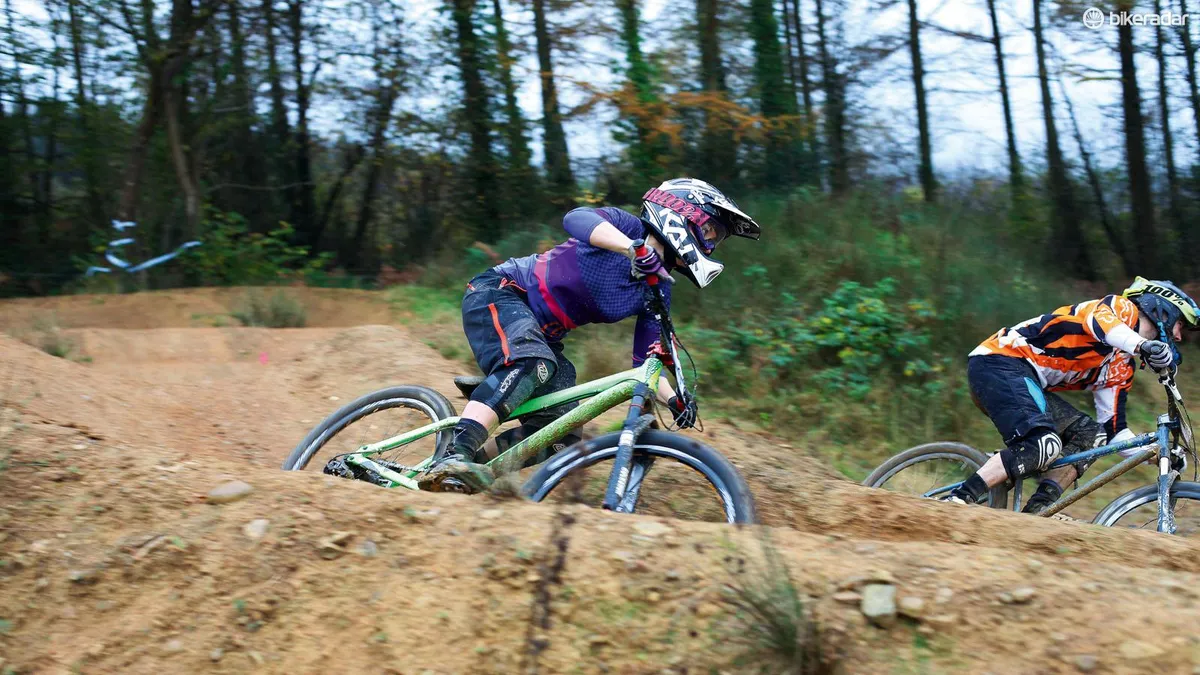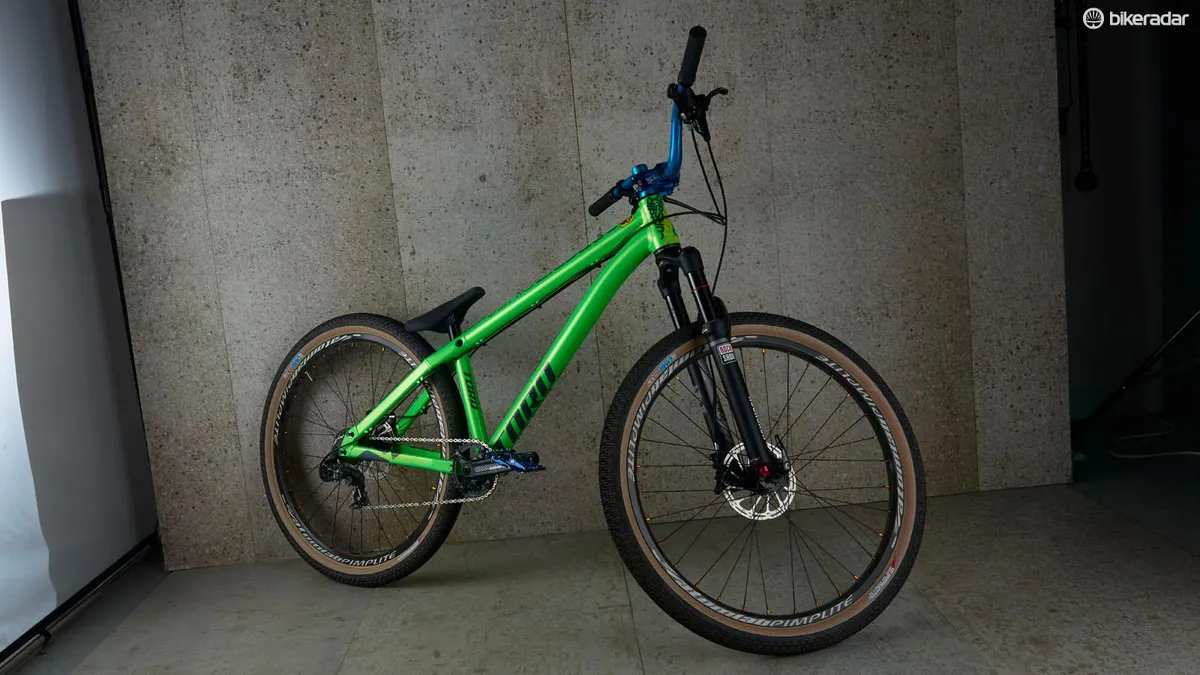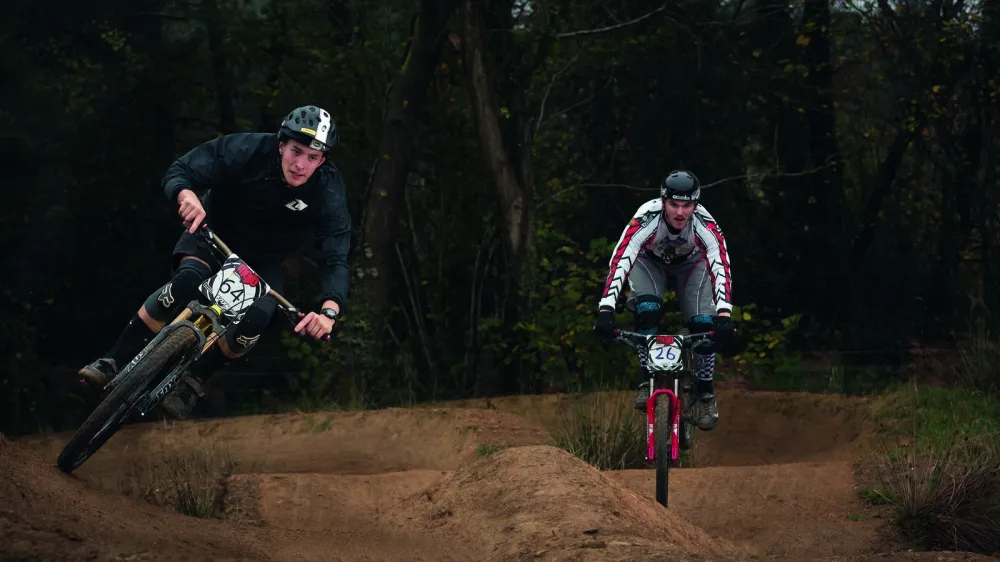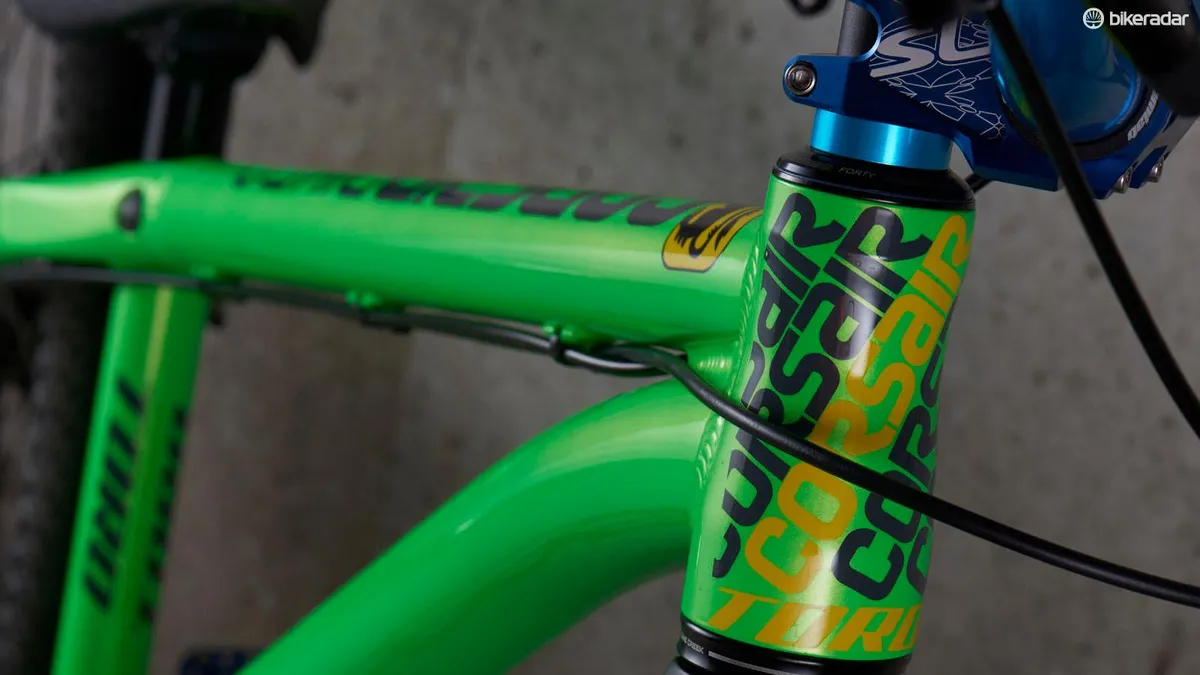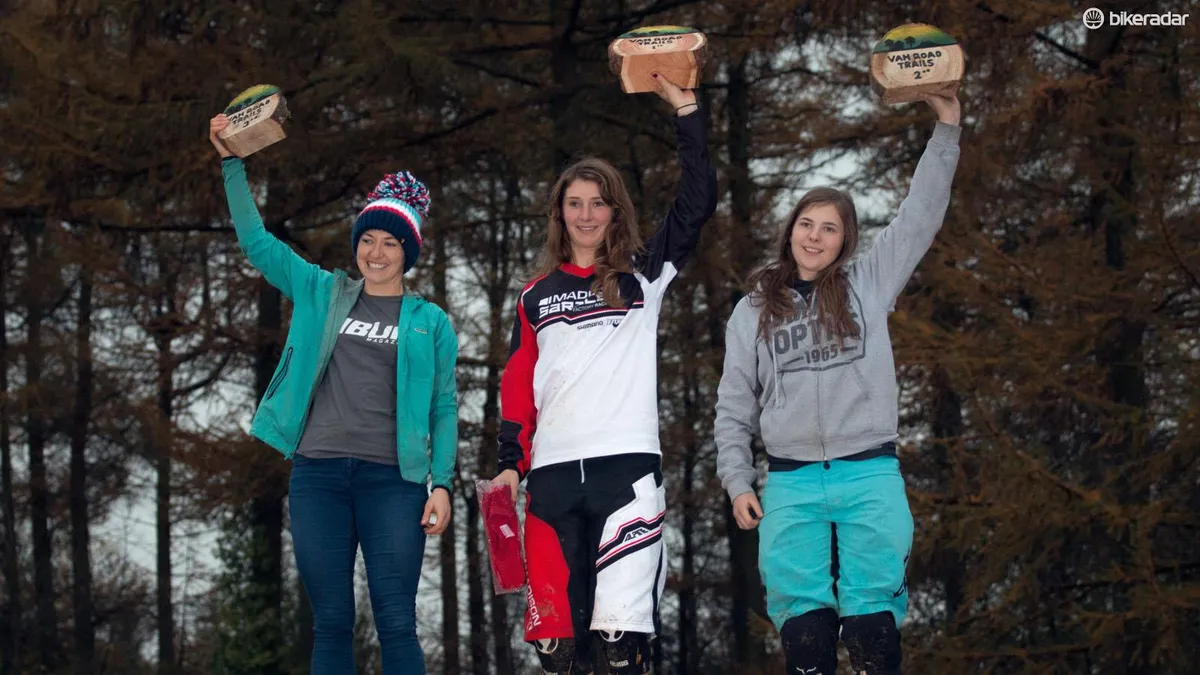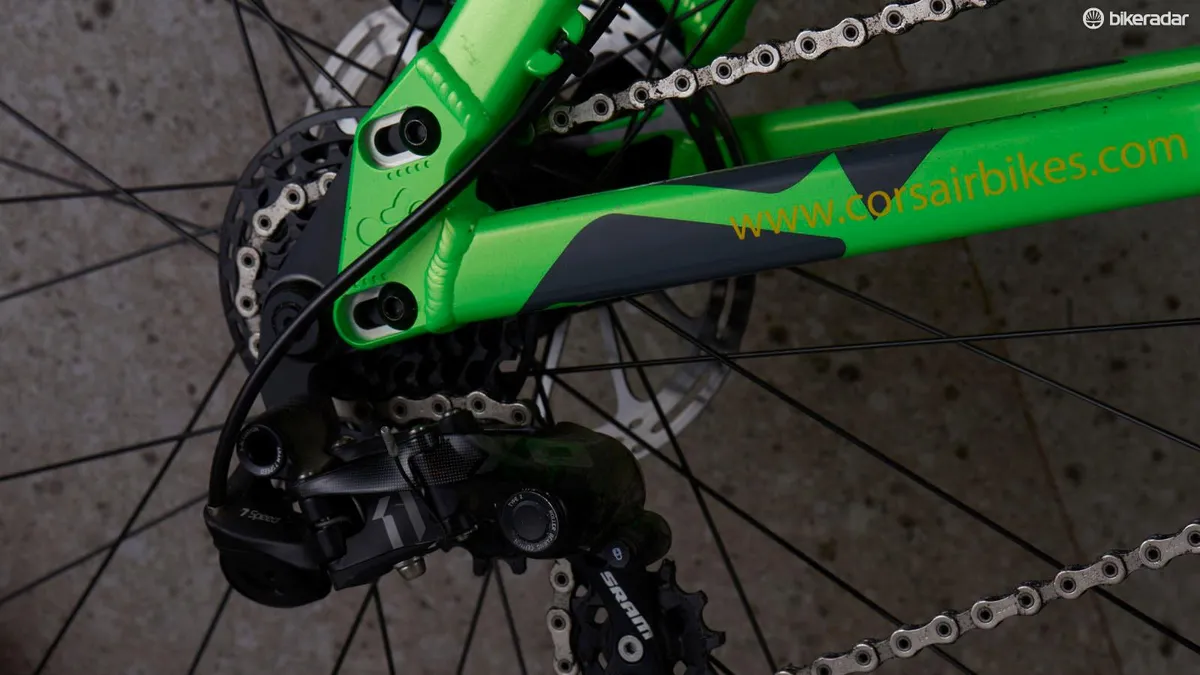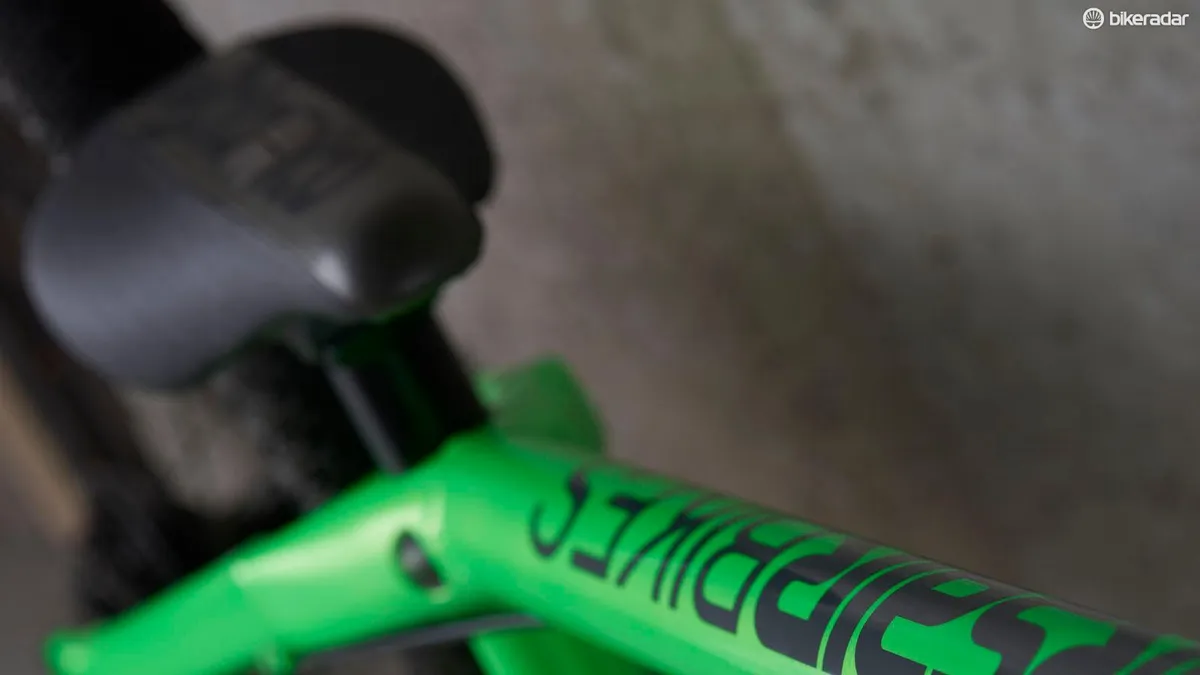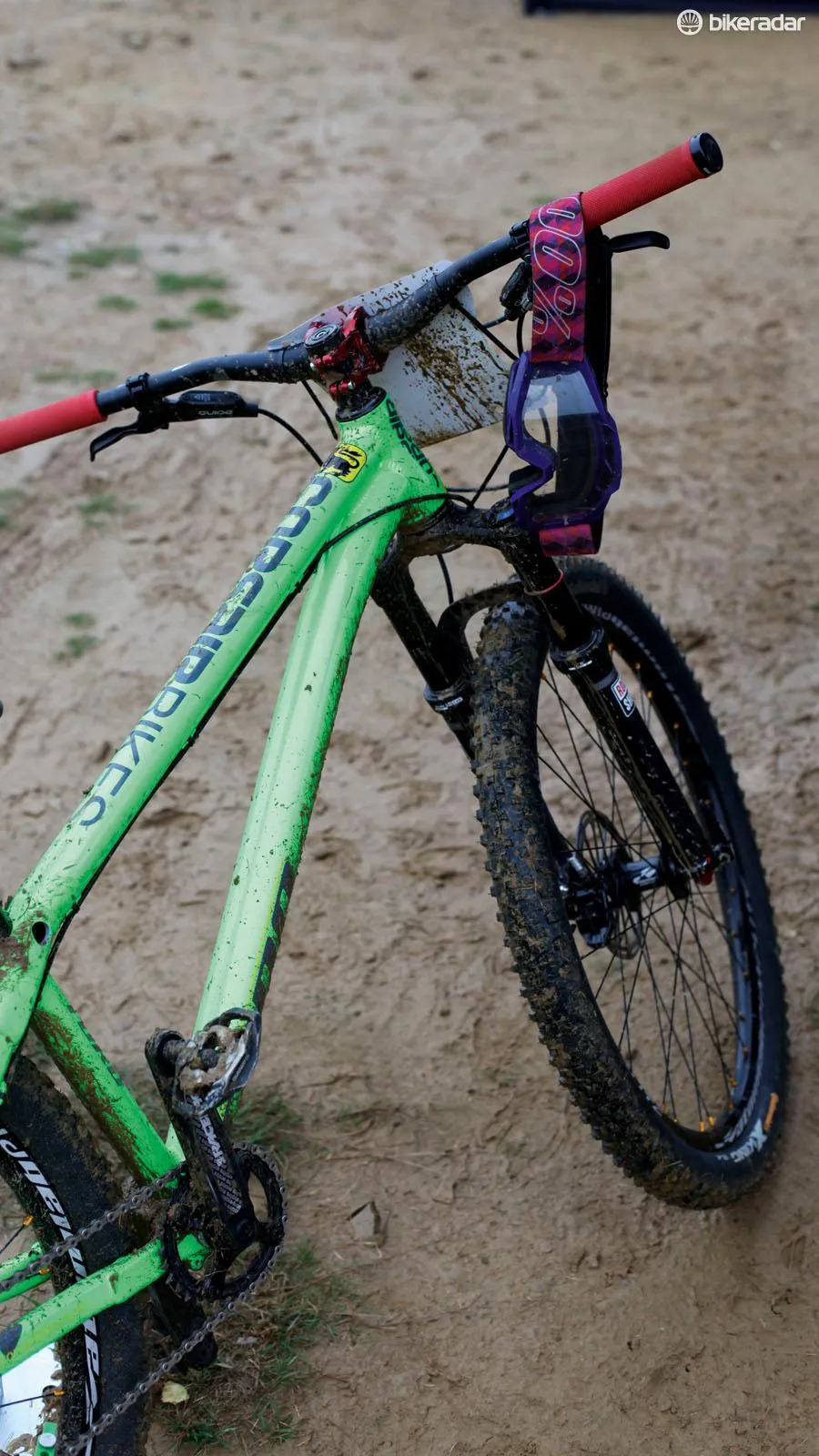Dual slalom racing, in case you're not familiar with it, consists of two racers racing side by side, head to head, down two identical lanes of a track.
The riders then switch lanes in the spirit of fairness, times are combined and the slower rider is eliminated in each round.
- The course: An intense 30-second track against the clock and a fellow racer. A quick stint of power with no room for mistakes or mechanicals.
- The equipment goal: A race such as this requires a short-travel bike, usually a hardtail, one that revels in being pumped hard and fast, isn’t opposed to getting in the air and with a good turn of speed when the power is put on the cranks. Rocking up at these races you'll find the same bikes that you might find at a 4x race: short, snappy and tough.
- The horse: A Corsair Toro custom-build 4x bike, equipped with SRAM Guide R brakes, SRAM DH X0 1 x 7 drivetrain, RaceFace Evolve cranks and Atomlab wheels, bars and stem
The tracks used are usually about 30 seconds long and consist of tabletop jumps, pumps and berms leaving it up the rider to decide whether it is faster to keep the rubber on the ground or get some air time. Race day typically begins with free practice on the track, followed by a timed seeding run and then onto racing proper, consisting of quarter finals, semi-finals and then, as it's called in 4X racing, the A and B finals. It all makes for a great spectator sport as riders battle it out in each round, taking risks and pumping hard for the win.
Related: Horse for the Course – Mondraker Dune Carbon for Enduro World Series
Me, I love racing. I’m pretty competitive and I like the way racing makes ride. It makes me take much larger risks (admittedly only some of which pay off) and ride much harder than I ever achieve on normal days out on the bike.
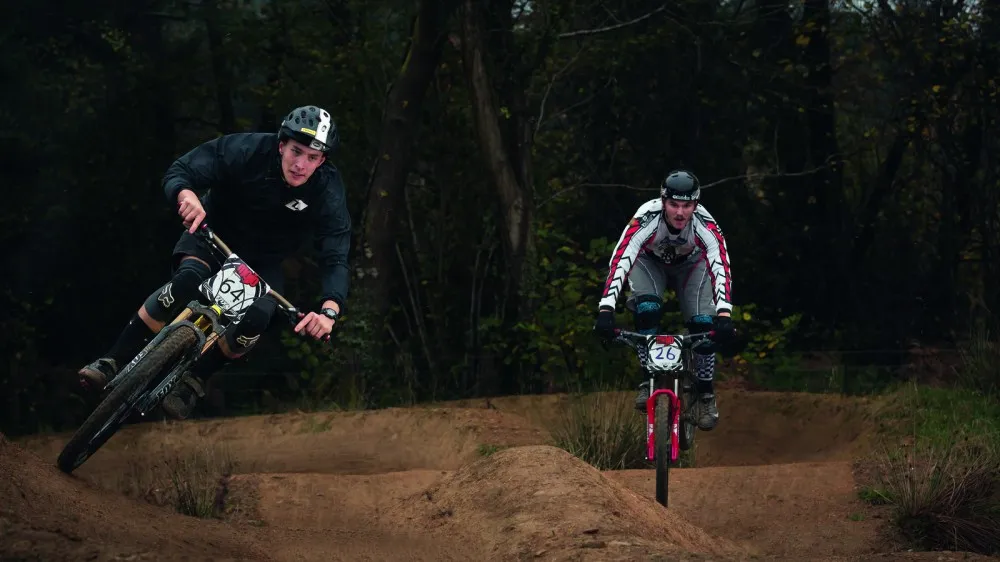
Dual slalom: head-to-head racing on identical tracks
I’m also keen to improve and believe one of the best ways to do this is to experience as much of the mountain bike world as possible. On that note, and having never raced dual slalom or 4X type events, I decided that the Van Road Dual Slalom, in the first week of November was a must.
Dual slalom's new dawn
Dual slalom has been around for donkey’s years, reportedly as long as Steve Peat has been on the race circuit. Once upon a time, in fact, it was included in the UCI MTB World Cup – before it gave rise to its sister discipline of 4x, which then replaced it.
Despite its popularity in the States at events such as the Sea Otter Classic in California, dual slalom has never really taken off in the UK… but that looks set to change. Events like the one I'd entered, held at the Van Road Trails, Caerphilly, Wales, are staking the claims of this exciting discipline and helping it earn its place on racing calendars.
The trails at Van Road are the culmination of work between Castle Bikes in Caerphilly, the Sport Council for Wales and Natural Resource Wales, with the building work carried out by Trailcraft MTB and BMX Track Construction. The man behind the trails at the site (along with an enthusiastic committee) is Jason Carpenter, father of World Champ Manon and the once organiser of the Welsh ‘Dragon Downhill’ series.
Carpenter built trails in the site 18 years ago, which were sadly demolished in 2010, but by 2012 the committee had been formed, a relationship had been shaped with Natural Resource Wales (formerly Forestry Commission) and new trails were in place. With the experience of Jason and the Trailcraft team creating these trails, you can be take my word for it that these are some great tracks.
Horse – or bull?
The Corsair Toro was recently in for test at BikeRadar, a bike designed as a competitor for the 4x market and a bike I knew would be perfect for the dual slalom.
Related: Corsair Toro custom build review
American brand Corsair has been absent from the UK market for some time. More often known for bikes capable of the Red Bull Rampage, Corsair has been producing frames aimed at demanding trail and gravity-oriented riders since 2007 with the Toro, an aggressive 4x/jump bike now taking its place in the lineup.
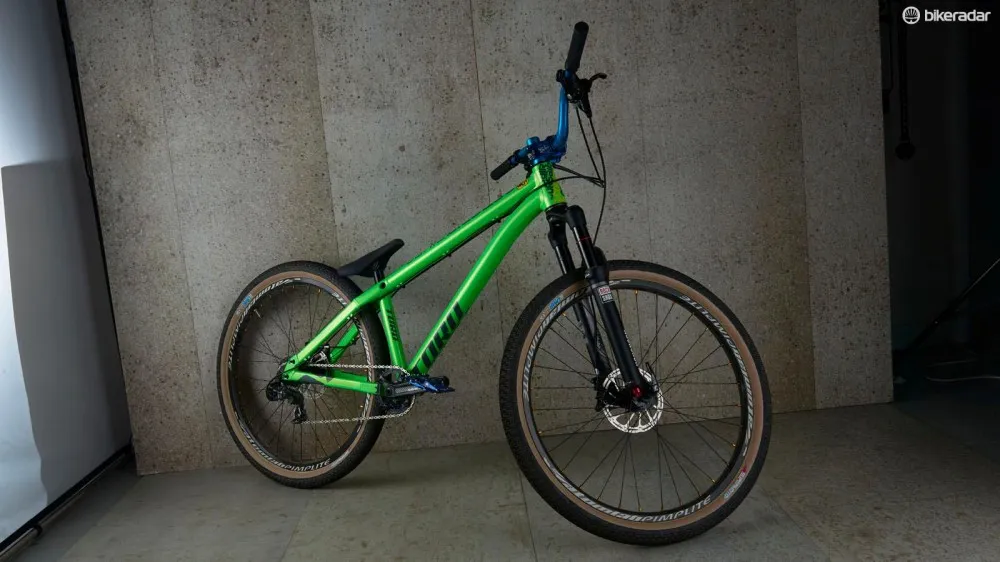
Our Corsair Toro, borrowed from South Wales' Resurrection Cycles
The Toro's alloy frame is designed to take big hits – the CNCed bottom bracket and seatstay yoke are testament to this. These types of bike have a low standover meaning riders can throw shapes to their hearts content without the fear of the frame restricting them. When considering time on the ground, a low standover also means riders can get down and keep the centre of gravity lower in turns, making for some aggressive cornering.
Up front, the Toro sports a RockShox Pike DJ with 100mm of travel and a custom-tuned Charger damper to help it stand up on jump faces. The DJ is designed to be progressive when approaching bottom-out, to keep landings smooth on big hits.
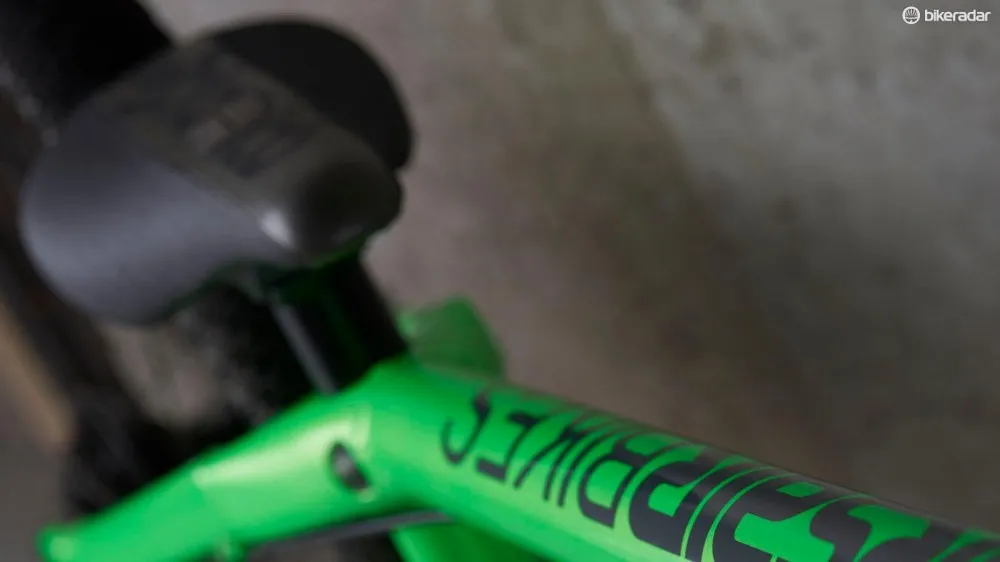
Cool decals on the top tube
In this game suspension is there to take the sting out of big jumps or hard landings – any extra movement is wasted energy and could lose you vital milliseconds. Knowing that my race would depend on my pumping skills, I set up the forks a tad on the hard side, meaning there was no chance of any wasted effort as I pushed the bike up and down the rollers.
Small wheels ain't dead
Talking of not wasting energy or momentum, 26in wheels really aren't dead in the dual slalom and 4x world. Smaller wheels can be built stronger to soak up high cornering speeds, and also accelerate quicker, which during such short races can mean the difference between a first or second place. My Toro came adorned with Atomlab Pimplite wheelset, with the rear hub having 120 points of engagement – meaning this ride certainly responded quickly to pedal cranks.
Turning to the cockpit, the Toro was equipped with Atomlab SL bars (which are 760mm standard) and a 35mm Atomlab SL stem stem. The bars and stem had a 35mm clamp for increased stiffness over the more widely seen 31.8mm diameter. Wide bars and a short stem boost your leverage and help you stay centred over the bike, making hitting the right lines to shave off time even easier. The 258g bars and 158g stem made for a respectable combined weight given the tough, durable nature of the kit. Reducing weight isn’t a real issue here – strength and reliability is the key.
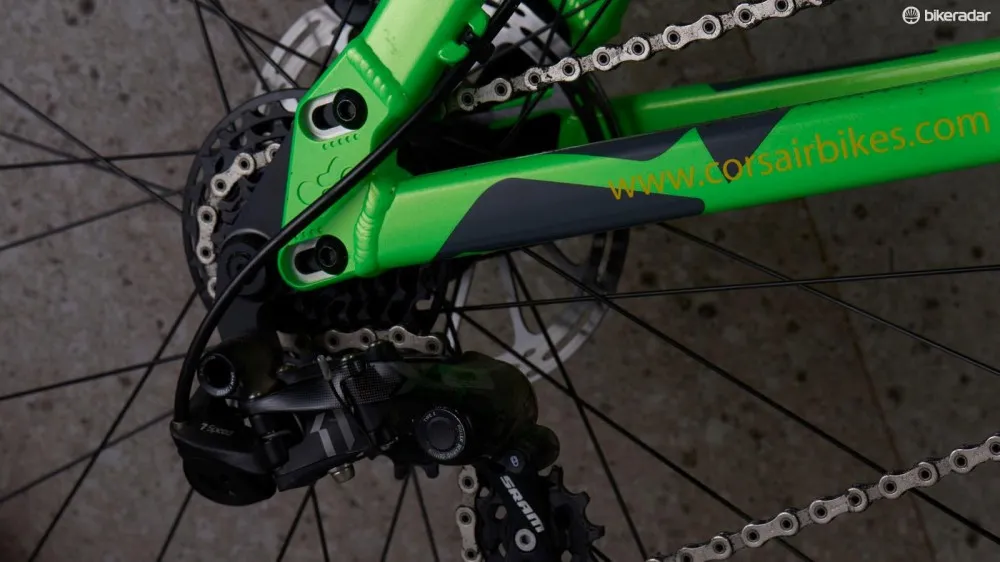
SRAM's X0 DH 1x7 rear cassette provides ample gearing for this kind of riding
Finally, the Toro was adorned with SRAM jewellery in the form of an XO DH 1x7 drivetrain with Race Face Evolve Cranks and SRAM Guide R brakes. Seven gears at the rear enables faster, smoother gear changing and also allows the racer to run a shorter-caged rear derailleur, lessening the likelihood of damage – which would spell the end of your heat. On short, predominantly downhill tracks you'll struggle to need any more gears than this, and in fact at the dual slalom event I found singlespeed rigs were proving popular.
The brakes are powerful four-pots, allowing short, sharp split-second braking decisions. Many jump bikes just have one brake at the rear but most MTB races require you to equip your bike with two (remember, safety first, even if you have no intention of touching that front brake).
One size fits all
On race day we were met with a slightly soggy track – hardly surprising given what had come down from the sky overnight. It would hold up impressively well though, with the only real test of cornering skills coming after a small step-up into the tiniest of berms, of which come lunchtime was pretty much demolished, squished into the floor by many an overshoot as riders braked hard into the turn.
Tyres were changed as I didn’t fancy the DJ rubber that the bike normally runs on – a set of DMR Super Motos. That said, the cheaper, hard-compound Continental X-King rubber I was able to put on instead still wouldn't have been my first choice for the conditions, but I took comfort in seeing Manon Carpenter running the same tyres. (I wonder if hers were the Black Chilli compound.)
The Toro is a one-size-fits-all bike, but even at my mere 160cm I felt right at home right away on the little green machine. I kept the adjustable dropouts in shortest position, leaving me with a wheelbase of 1040mm, even at its shortest its relatively long for a jump bike. This coupled with the 69-degree head angle made for the bike felt stable and confidence inspiring at speed. It was well balanced over jumps begging for more and leaving me with a massive grin!
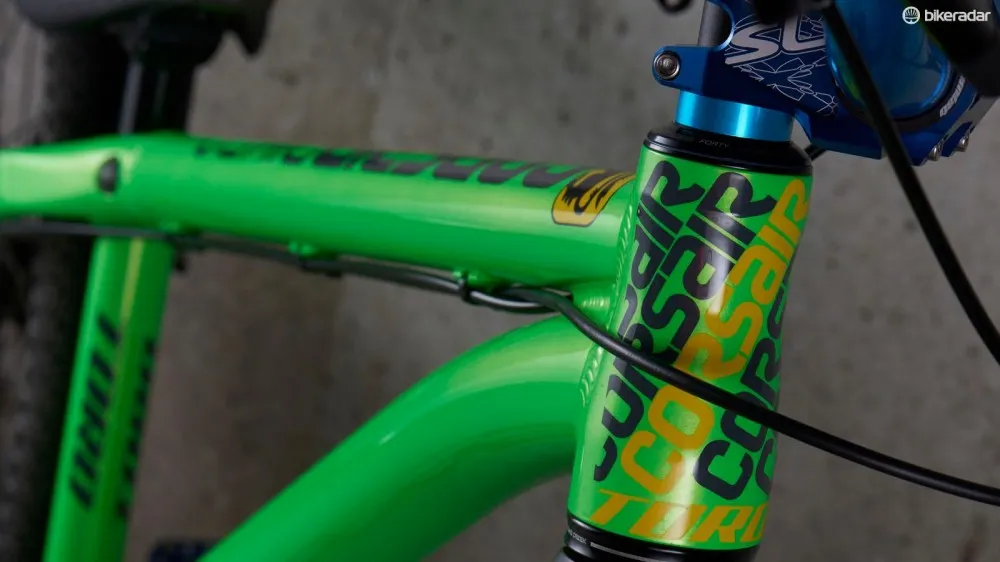
Neat cable routing on the Corsair Toro
As I raced down the trails in practice with my friend and last year's winner Rob Webb to my side, it was interesting (to say the least) seeing him out of the corner of my eye, throwing whips about a metre above my head! I found a sweet gear in the middle of the range and stuck with it; on such a short track, gear changes lose valuable time, which could instead have been used to put the hammer down.
After a couple of hours getting to know both the Toro and the tracks, I put in a seeding run slotting me into third place. Through practice I'd learned that the left-hand lane was a lot slower than the right and that anyone would be hard-pressed to win in it. (Fortunately each heat had a run in both lanes, keeping things fair.)
From seeding, with just six women involved, racing was short and sweet. Quarter finals and a slip of the pedal on run two nearly saw me out, but after winning by just 0.01 of a second I was through to the semi-finals.
Here racing was close again, each of us taking a win but with my fellow competitor Jess Greaves being the faster lady, I settled for third place. Greaves was then pitted against Manon Carpenter, with the downhill superstar coming out on top. In the elite men another World Cup rider made an appearance in this damp corner of Wales, Pivot rider Bernard Kerr taking the win, his seeding time also making him the fastest man of the day.
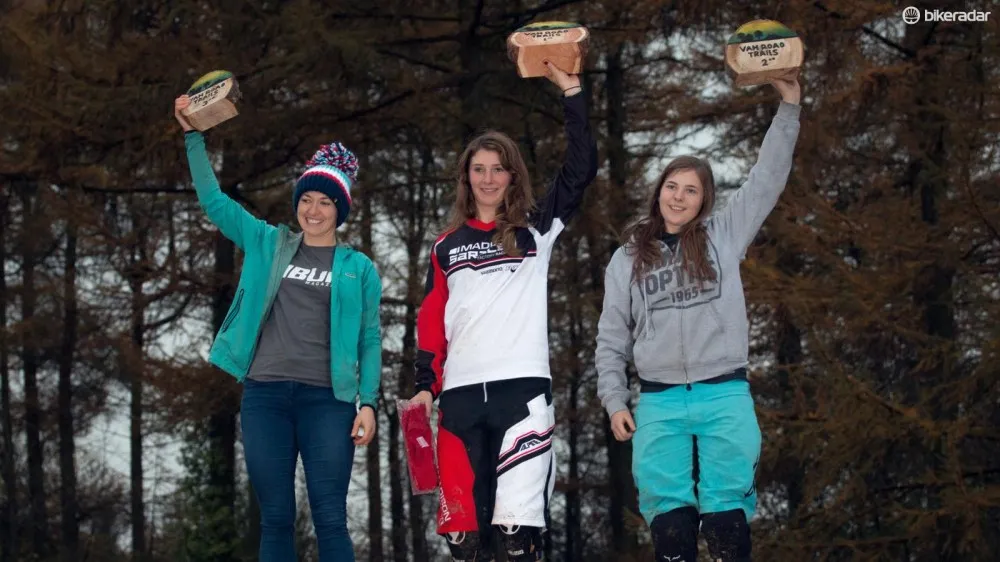
Rachael Gurney on the third step of the podium
The Corsair Toro made what was always going to be a good day a great one. It was the perfect partner for my first foray into dual slalom racing, helping me learn to use start gates for the first time and feeling stable and committed to the jumps and berms. A fun little bike that loves to be ridden quickly, with reliable components, it’s ready for all that can be thrown at it.
